Intro
Alleviate medial collateral ligament pain with effective relief methods, including physical therapy, knee braces, and exercises, to reduce MCL injury discomfort and promote healing, restoring knee stability and function.
The medial collateral ligament (MCL) is one of the most crucial ligaments in the knee, providing stability and support to the joint. However, MCL injuries are common, especially among athletes and individuals who engage in physical activities that involve sudden twists and turns. MCL pain can be debilitating, making it challenging to perform daily activities, let alone participate in sports or exercises. Understanding the causes, symptoms, and treatment options for MCL pain is essential for effective relief and recovery.
MCL injuries can occur due to various reasons, including direct blows to the knee, sudden twisting or bending, and overuse. The severity of the injury can range from mild to severe, with grade 1 being the mildest and grade 3 being the most severe. Symptoms of MCL pain may include pain and tenderness on the inner aspect of the knee, swelling, bruising, and instability or looseness in the knee joint. In some cases, individuals may experience locking or catching sensations in the knee, making it difficult to move or bear weight.
The importance of seeking medical attention for MCL pain cannot be overstated. If left untreated, MCL injuries can lead to chronic pain, arthritis, and decreased mobility. Furthermore, untreated MCL injuries can increase the risk of further complications, such as meniscal tears or anterior cruciate ligament (ACL) injuries. A comprehensive treatment plan, including physical therapy, bracing, and pain management, can help alleviate MCL pain and promote recovery.
MCL Pain Causes and Risk Factors
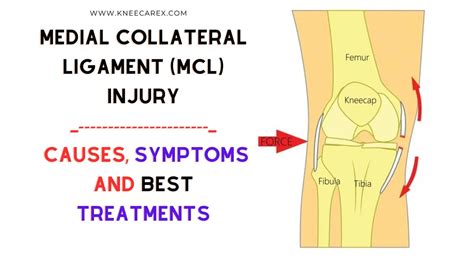
MCL Injury Classification
MCL injuries can be classified into three grades, depending on the severity of the injury. Grade 1 injuries are the mildest, with minimal pain and tenderness, while grade 3 injuries are the most severe, with significant pain, swelling, and instability. Understanding the classification of MCL injuries is essential for developing an effective treatment plan.MCL Pain Symptoms and Diagnosis

MCL Pain Diagnostic Tests
Diagnostic tests, such as the valgus stress test, can help assess the severity of the MCL injury. The valgus stress test involves applying pressure to the outer aspect of the knee, while the knee is bent at a 30-degree angle. This test can help determine the degree of laxity or looseness in the MCL.MCL Pain Treatment Options
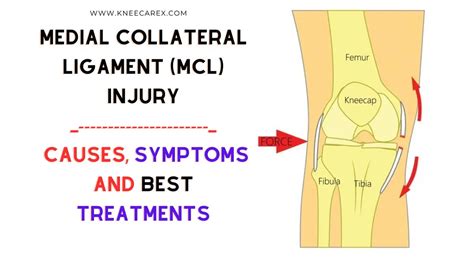
MCL Pain Management Techniques
Pain management techniques, such as the RICE principle (rest, ice, compression, and elevation), can help alleviate pain and inflammation. Additionally, medications, such as nonsteroidal anti-inflammatory drugs (NSAIDs), can help reduce pain and inflammation.MCL Pain Prevention and Recovery
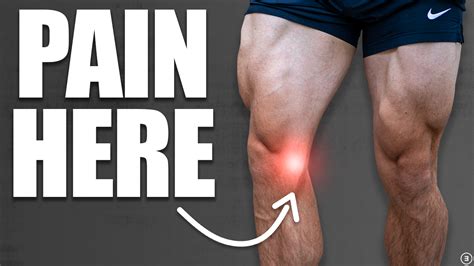
MCL Pain Rehabilitation Exercises
Rehabilitation exercises, such as squats, lunges, and leg press, can help improve knee strength, mobility, and stability. Additionally, exercises that target the core and hip muscles, such as planks and glute bridges, can help improve overall lower extremity stability and reduce the risk of future injuries.MCL Pain Complications and Future Directions

MCL Pain Current Research
Current research on MCL pain is focused on developing new and innovative treatment approaches, including the use of biologics and orthobiologics. Additionally, research on the prevention and treatment of MCL injuries is ongoing, with a focus on developing effective prevention programs and treatment protocols.MCL Pain Patient Education and Awareness

MCL Pain Patient Resources
Patient resources, such as online support groups and educational websites, can provide individuals with MCL injuries with valuable information and support. Additionally, healthcare providers can offer guidance and support to help individuals navigate the recovery process and make informed decisions about their care.MCL Pain Healthcare Provider Education and Training
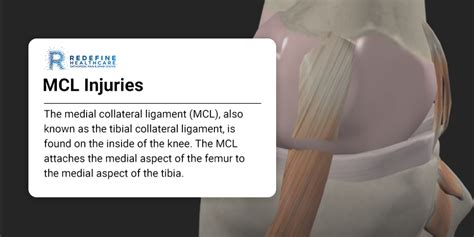
MCL Pain Healthcare Provider Resources
Healthcare provider resources, such as online training programs and educational conferences, can provide healthcare providers with valuable information and support. Additionally, healthcare providers can collaborate with other healthcare professionals to develop effective treatment plans and promote recovery.MCL Pain Summary and Final Thoughts
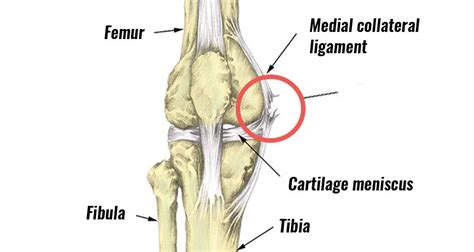
We invite you to share your thoughts and experiences with MCL pain in the comments below. If you have any questions or concerns, please do not hesitate to reach out. Additionally, we encourage you to share this article with others who may be experiencing MCL pain, as it may provide valuable information and support.
What are the common causes of MCL pain?
+MCL pain can be caused by various factors, including sports injuries, overuse, and direct blows to the knee. Athletes who participate in contact sports, such as football, soccer, and basketball, are at a higher risk of developing MCL injuries.
What are the symptoms of MCL pain?
+Symptoms of MCL pain may include pain and tenderness on the inner aspect of the knee, swelling, bruising, and instability or looseness in the knee joint. In some cases, individuals may experience locking or catching sensations in the knee, making it difficult to move or bear weight.
What are the treatment options for MCL pain?
+Treatment options for MCL pain may include physical therapy, bracing, pain management, and surgery. Physical therapy can help improve knee mobility, strength, and stability, while bracing can provide additional support and protection to the knee joint.
